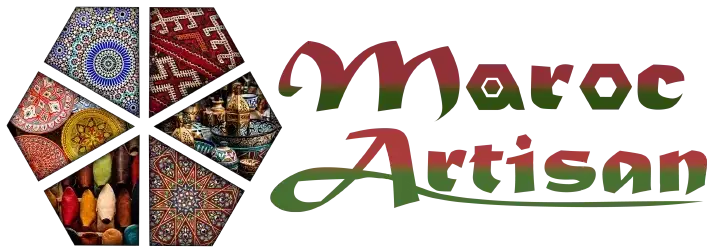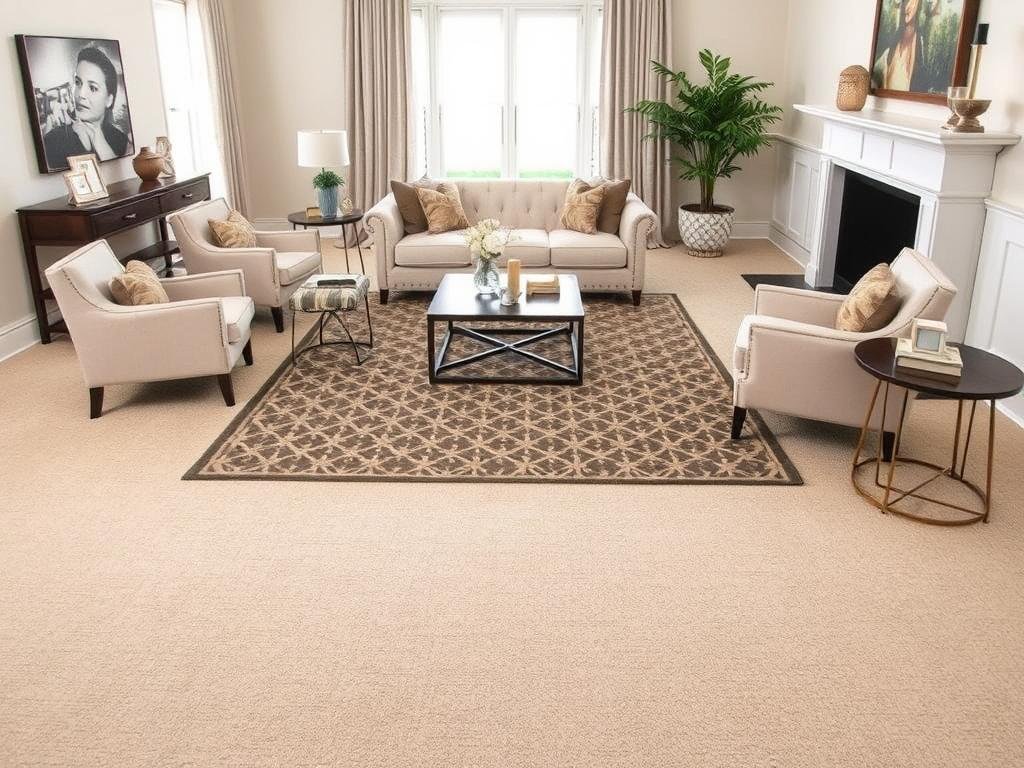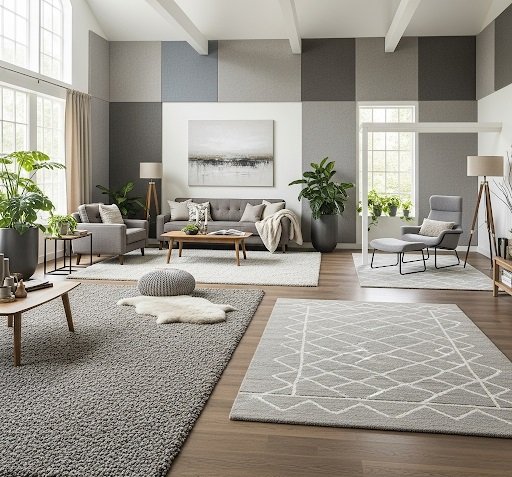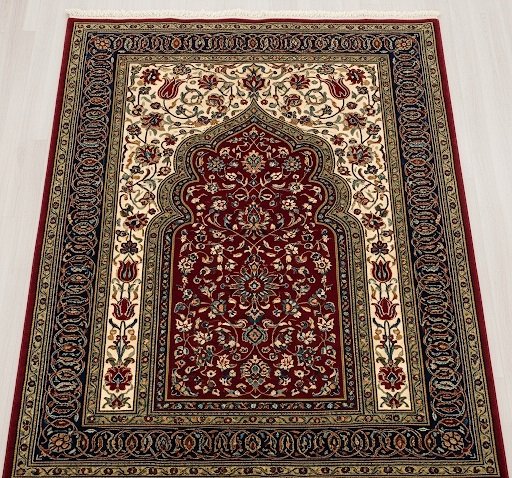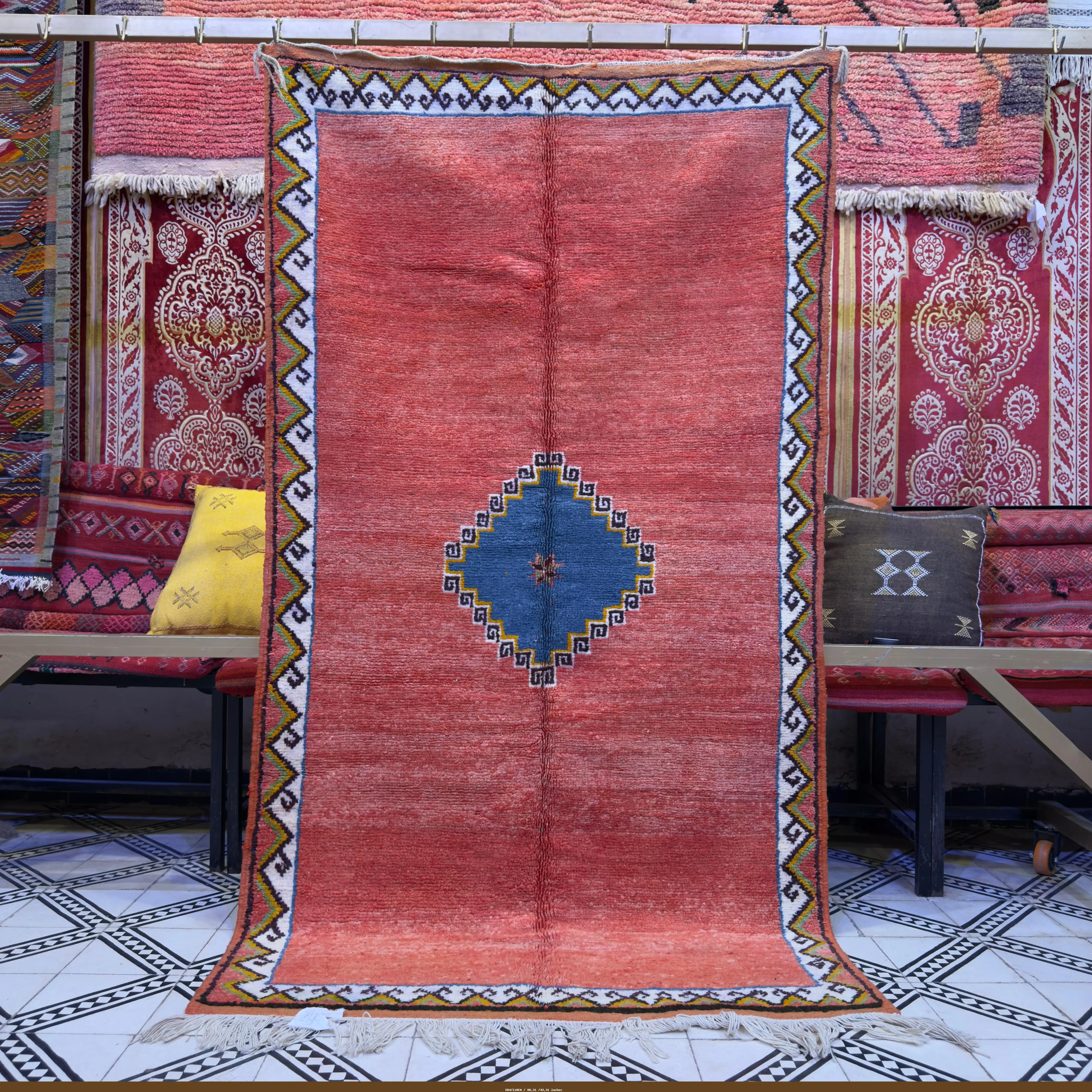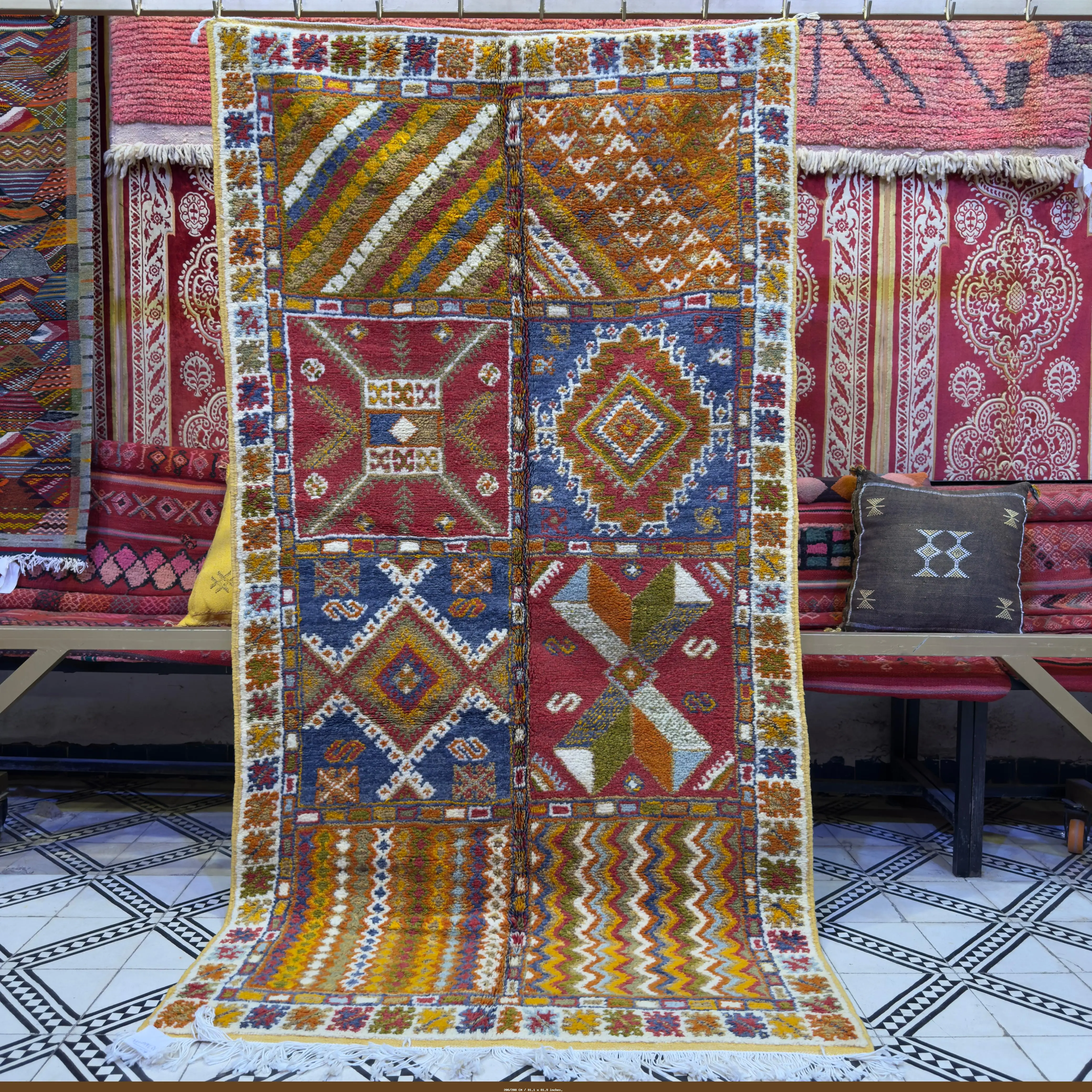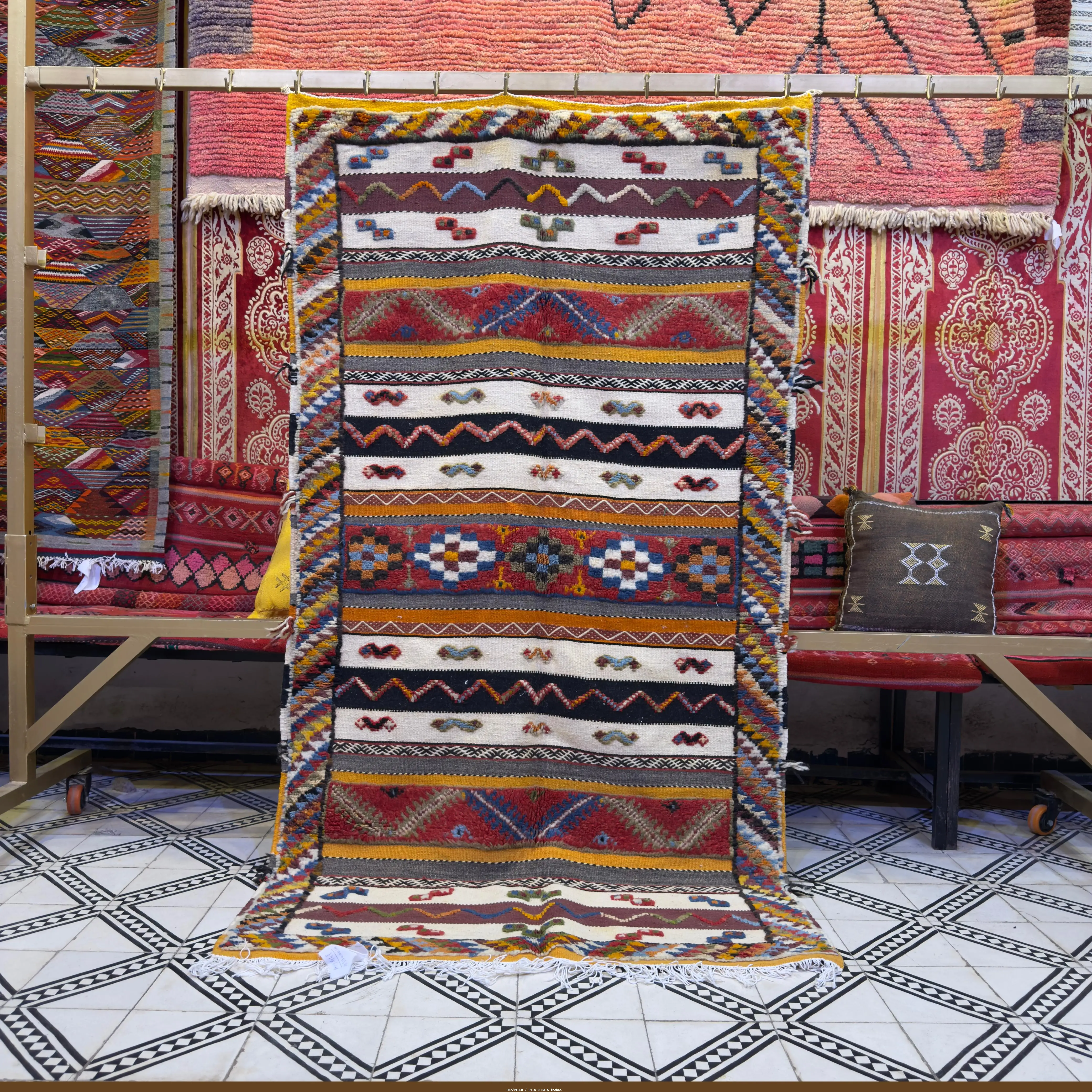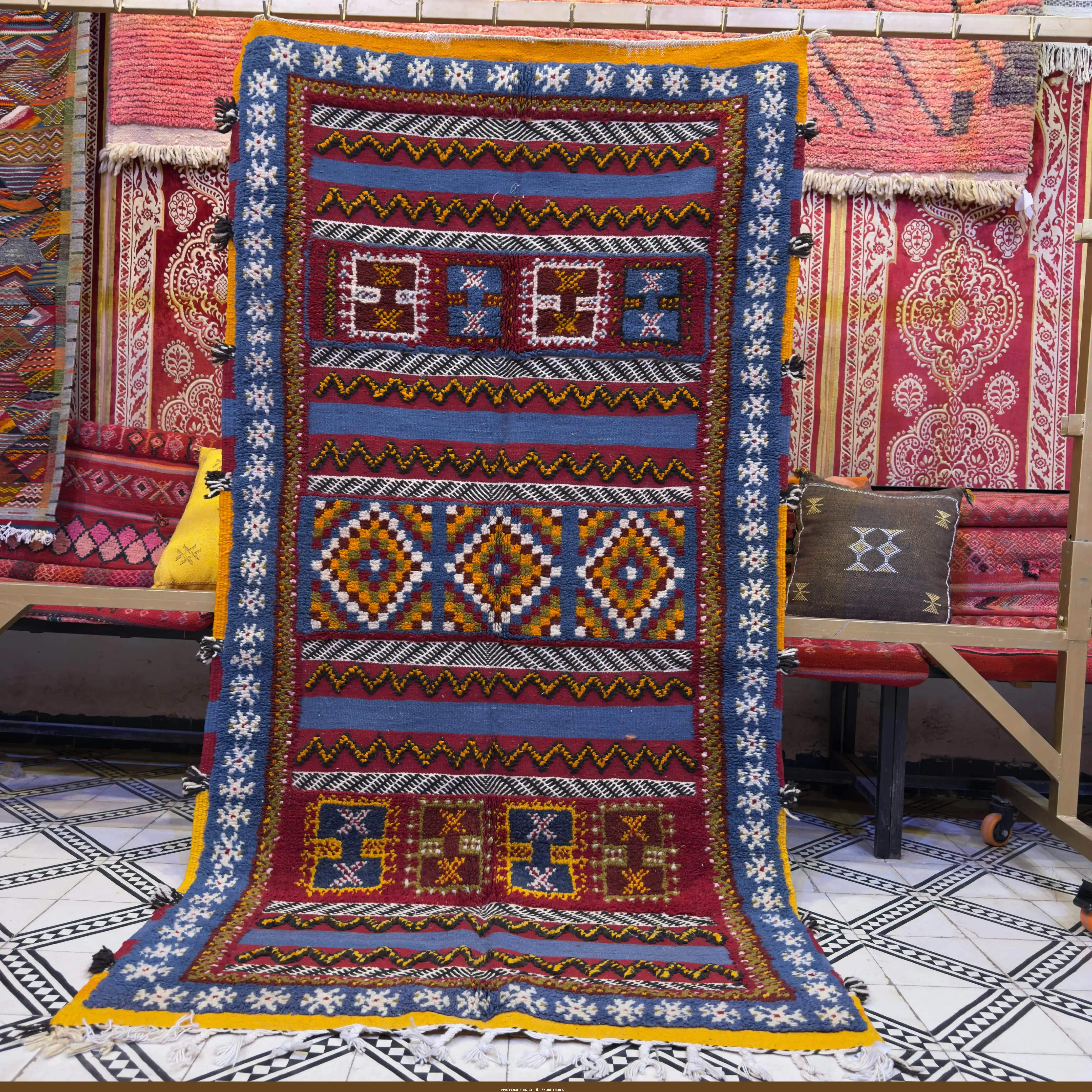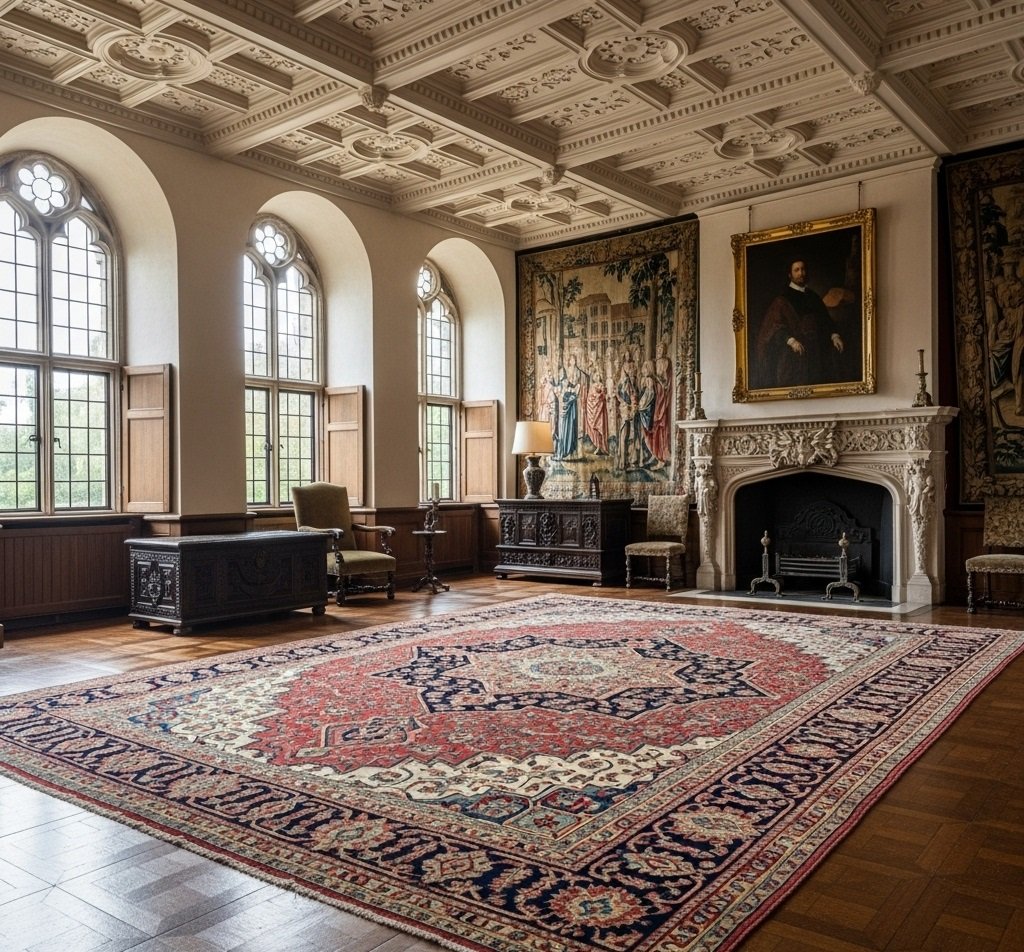
03 Aug 2025
Document Rugs
Few objects in the world of decor carry the same weight of history, artistry, and mystique as the Persian rug. To unroll one on your floor is to unroll a story that spans empires, dynasties, and millennia. These are not mere floor coverings; they are canvases of woven poetry, maps of cultural history, and testaments to a craft perfected over thousands of years.
From the nomadic tents of ancient Persia to the grand palaces of shahs, the Persian rug has been a symbol of beauty, luxury, and soul. Join us on a journey to explore the rich history and intricate artistry that make these textiles one of the most treasured art forms in the world.

Ancient Roots: A Legacy Over 2,500 Years Old
The story of the Persian rug begins in ancient Persia (modern-day Iran) over 2,500 years ago. The oldest known carpet in the world, the Pazyryk carpet, discovered in a Siberian burial mound and dating back to the 5th century BC, showcases a level of technical and artistic sophistication that proves the craft was already well-established even then. Born from the practical need for warmth and comfort in nomadic life, rug weaving quickly evolved from a simple craft into a highly revered art form, a way to bring the beauty of a garden into the home.
The Golden Age: The Safavid Dynasty and Royal Workshops
While the craft is ancient, it was during the Safavid dynasty in the 16th century that Persian rug weaving reached its zenith. Rulers like Shah Abbas the Great recognized the cultural and economic value of these textiles, elevating them from a folk art to a national industry. He established royal workshops in cities like Isfahan, Tabriz, and Kashan, where master weavers created breathtaking masterpieces for the royal court.
During this golden age, designs became more intricate, materials more luxurious, and the scale more magnificent. Large area rugs of incredible complexity were woven with silk, cotton, and fine wool, often incorporating gold and silver threads, to adorn the floors of grand palaces and to be given as powerful diplomatic gifts to foreign dignitaries.
The Woven Language: Symbolism in Every Knot
Every element in a Persian rug is intentional, part of a rich symbolic language passed down through generations. The patterns are not just decorative; they are stories and prayers woven in wool.
-
The Medallion: A central medallion, common in city rugs, often symbolizes the divine, a single point of creation, or the sun.
-
Floral Motifs: Intricate floral patterns, or "Herati" designs, represent a heavenly garden or paradise, a recurring theme in Persian art and poetry. The lotus flower symbolizes rebirth, while the peony represents power.
-
Geometric Patterns: More common in tribal or village rugs, bold geometric designs often have ancient roots and can represent anything from a family's emblem to a protective talisman.
-
Animals: Birds are often symbols of paradise, lions represent courage and royalty, and peacocks symbolize immortality.
The Art of the Craft: A Labor of Love
The value of a Persian rug lies in the meticulous, time-consuming process of its creation. True Persian rugs are hand-knotted, a process where a weaver ties every single knot by hand onto a foundation of cotton or silk. A single rug can contain hundreds of thousands, or even millions, of individual knots.
The materials are of the highest quality. The wool is often "live wool," shorn from living sheep, which retains its natural lanolin oils, making it incredibly durable and giving it a beautiful luster. The colors traditionally came from natural dyes made from plants, insects, and minerals, creating a rich, nuanced palette that ages gracefully over time.
Preserving Your Heirloom: The Importance of Proper Care
A genuine Persian rug is an heirloom, capable of lasting for centuries if cared for properly. This means more than just occasional vacuuming.
The intricate weaves, natural fibers, and vegetable dyes are delicate and can be destroyed by harsh chemicals or improper cleaning techniques. This is why professional area rug cleaning is not a luxury, but a necessity for these pieces. An expert in area rug cleaning who specializes in hand-knotted rugs will know how to gently but thoroughly remove the deep-seated dirt that accumulates over time, restoring the rug's vibrancy without causing the colors to bleed or damaging the fibers. For large area rugs, this professional care is the only way to ensure the entire piece is cleaned safely and effectively, protecting your significant investment.
Conclusion: A Timeless Piece of History
To own a Persian rug is to be a custodian of a piece of human history. It is a connection to an ancient art form, a story of a culture, and a testament to the incredible skill and patience of its creator. Its timeless beauty and profound artistry ensure that it will continue to be one of the most cherished and sought-after objects of decor, a true masterpiece woven through time.
Peu d'objets dans le monde de la décoration portent le même poids d'histoire, d'art et de mystique que le tapis persan. En dérouler un sur votre sol, c'est dérouler une histoire qui s'étend sur des empires, des dynasties et des millénaires. Ce ne sont pas de simples revêtements de sol ; ce sont des toiles de poésie tissée, des cartes de l'histoire culturelle et des témoignages d'un artisanat perfectionné au fil des milliers d'années.
Des tentes nomades de l'ancienne Perse aux grands palais des shahs, le tapis persan a été un symbole de beauté, de luxe et d'âme. Rejoignez-nous dans un voyage pour explorer la riche histoire et l'art complexe qui font de ces textiles l'une des formes d'art les plus précieuses au monde.

Racines anciennes : Un héritage de plus de 2 500 ans
L'histoire du tapis persan commence dans l'ancienne Perse (l'Iran actuel) il y a plus de 2 500 ans. Le plus ancien tapis connu au monde, le tapis de Pazyryk, découvert dans un tumulus funéraire sibérien et datant du Ve siècle avant J.-C., démontre un niveau de sophistication technique et artistique qui prouve que l'artisanat était déjà bien établi à cette époque. Né du besoin pratique de chaleur et de confort dans la vie nomade, le tissage de tapis a rapidement évolué d'un simple artisanat à une forme d'art très vénérée, une façon d'apporter la beauté d'un jardin dans la maison.
L'âge d'or : La dynastie des Safavides et les ateliers royaux
Bien que l'artisanat soit ancien, c'est sous la dynastie des Safavides au XVIe siècle que le tissage de tapis persan a atteint son apogée. Des souverains comme Shah Abbas le Grand ont reconnu la valeur culturelle et économique de ces textiles, les élevant d'un art populaire à une industrie nationale. Il a établi des ateliers royaux dans des villes comme Ispahan, Tabriz et Kashan, où des maîtres tisserands créaient des chefs-d'œuvre à couper le souffle pour la cour royale.
Pendant cet âge d'or, les dessins sont devenus plus complexes, les matériaux plus luxueux et l'échelle plus magnifique. De grands tapis d'une complexité incroyable étaient tissés avec de la soie, du coton et de la laine fine, incorporant souvent des fils d'or et d'argent, pour orner les sols des grands palais et être offerts comme de puissants cadeaux diplomatiques aux dignitaires étrangers.
Le langage tissé : Le symbolisme dans chaque nœud
Chaque élément d'un tapis persan est intentionnel, faisant partie d'un riche langage symbolique transmis de génération en génération. Les motifs ne sont pas seulement décoratifs ; ce sont des histoires et des prières tissées dans la laine.
-
Le médaillon : Un médaillon central, courant dans les tapis de ville, symbolise souvent le divin, un point unique de création ou le soleil.
-
Les motifs floraux : Les motifs floraux complexes, ou dessins « Herati », représentent un jardin céleste ou un paradis, un thème récurrent dans l'art et la poésie persans. La fleur de lotus symbolise la renaissance, tandis que la pivoine représente le pouvoir.
-
Les motifs géométriques : Plus courants dans les tapis tribaux ou de village, les motifs géométriques audacieux ont souvent des racines anciennes et peuvent représenter n'importe quoi, de l'emblème d'une famille à un talisman protecteur.
-
Les animaux : Les oiseaux sont souvent des symboles du paradis, les lions représentent le courage et la royauté, et les paons symbolisent l'immortalité.
L'art de l'artisanat : Un travail d'amour
La valeur d'un tapis persan réside dans le processus méticuleux et long de sa création. Les vrais tapis persans sont noués à la main, un processus où un tisserand noue chaque nœud à la main sur une fondation de coton ou de soie. Un seul tapis peut contenir des centaines de milliers, voire des millions, de nœuds individuels.
Les matériaux sont de la plus haute qualité. La laine est souvent de la « laine vivante », tondue sur des moutons vivants, qui conserve ses huiles de lanoline naturelles, la rendant incroyablement durable et lui donnant un bel éclat. Les couleurs provenaient traditionnellement de colorants naturels à base de plantes, d'insectes et de minéraux, créant une palette riche et nuancée qui vieillit gracieusement avec le temps.
Préserver votre héritage : L'importance d'un entretien approprié
Un véritable tapis persan est un héritage, capable de durer des siècles s'il est entretenu correctement. Cela signifie plus qu'un simple passage d'aspirateur occasionnel.
Les tissages complexes, les fibres naturelles et les colorants végétaux sont délicats et peuvent être détruits par des produits chimiques agressifs ou des techniques de nettoyage inappropriées. C'est pourquoi le nettoyage de tapis professionnel n'est pas un luxe, mais une nécessité pour ces pièces. Un expert en nettoyage de tapis spécialisé dans les tapis noués à la main saura comment enlever en douceur mais en profondeur la saleté incrustée qui s'accumule avec le temps, restaurant l'éclat du tapis sans faire dégorger les couleurs ni endommager les fibres. Pour les grands tapis, ces soins professionnels sont le seul moyen de garantir que toute la pièce est nettoyée en toute sécurité et efficacement, protégeant ainsi votre investissement important.
Conclusion : Une pièce d'histoire intemporelle
Posséder un tapis persan, c'est être le gardien d'un morceau de l'histoire humaine. C'est un lien avec une forme d'art ancienne, l'histoire d'une culture et un témoignage de l'incroyable habileté et patience de son créateur. Sa beauté intemporelle et son art profond garantissent qu'il continuera d'être l'un des objets de décoration les plus chéris et les plus recherchés, un véritable chef-d'œuvre tissé à travers le temps.
Pocos objetos en el mundo de la decoración tienen el mismo peso de historia, arte y misticismo que la alfombra persa. Desenrollar una en tu suelo es desenrollar una historia que abarca imperios, dinastías y milenios. No son simples revestimientos de suelo; son lienzos de poesía tejida, mapas de la historia cultural y testimonios de una artesanía perfeccionada a lo largo de miles de años.
Desde las tiendas nómadas de la antigua Persia hasta los grandes palacios de los sahs, la alfombra persa ha sido un símbolo de belleza, lujo y alma. Acompáñanos en un viaje para explorar la rica historia y el complejo arte que hacen de estos textiles una de las formas de arte más preciadas del mundo.

Raíces antiguas: Un legado de más de 2.500 años
La historia de la alfombra persa comienza en la antigua Persia (el actual Irán) hace más de 2.500 años. La alfombra más antigua conocida en el mundo, la alfombra de Pazyryk, descubierta en un túmulo funerario siberiano y datada en el siglo V a.C., demuestra un nivel de sofisticación técnica y artística que prueba que la artesanía ya estaba bien establecida en esa época. Nacido de la necesidad práctica de calor y comodidad en la vida nómada, el tejido de alfombras evolucionó rápidamente de una simple artesanía a una forma de arte muy venerada, una manera de llevar la belleza de un jardín al hogar.
La edad de oro: La dinastía safávida y los talleres reales
Aunque la artesanía es antigua, fue durante la dinastía safávida en el siglo XVI cuando el tejido de alfombras persas alcanzó su apogeo. Gobernantes como el Shah Abbas el Grande reconocieron el valor cultural y económico de estos textiles, elevándolos de un arte popular a una industria nacional. Estableció talleres reales en ciudades como Isfahán, Tabriz y Kashan, donde maestros tejedores creaban obras maestras impresionantes para la corte real.
Durante esta edad de oro, los diseños se volvieron más complejos, los materiales más lujosos y la escala más magnífica. Se tejían grandes alfombras de una complejidad increíble con seda, algodón y lana fina, a menudo incorporando hilos de oro y plata, para adornar los suelos de los grandes palacios y ser ofrecidas como poderosos regalos diplomáticos a dignatarios extranjeros.
El lenguaje tejido: El simbolismo en cada nudo
Cada elemento de una alfombra persa es intencional, parte de un rico lenguaje simbólico transmitido de generación en generación. Los patrones no son solo decorativos; son historias y oraciones tejidas en lana.
-
El medallón: Un medallón central, común en las alfombras de ciudad, a menudo simboliza lo divino, un punto único de creación o el sol.
-
Los motivos florales: Los complejos motivos florales, o diseños "Herati", representan un jardín celestial o un paraíso, un tema recurrente en el arte y la poesía persas. La flor de loto simboliza el renacimiento, mientras que la peonía representa el poder.
-
Los motivos geométricos: Más comunes en las alfombras tribales o de pueblo, los audaces diseños geométricos a menudo tienen raíces antiguas y pueden representar cualquier cosa, desde el emblema de una familia hasta un talismán protector.
-
Los animales: Las aves suelen ser símbolos del paraíso, los leones representan el coraje y la realeza, y los pavos reales simbolizan la inmortalidad.
El arte de la artesanía: Un trabajo de amor
El valor de una alfombra persa reside en el meticuloso y largo proceso de su creación. Las verdaderas alfombras persas están anudadas a mano, un proceso en el que un tejedor anuda cada nudo a mano sobre una base de algodón o seda. Una sola alfombra puede contener cientos de miles, o incluso millones, de nudos individuales.
Los materiales son de la más alta calidad. La lana suele ser "lana viva", esquilada de ovejas vivas, que conserva sus aceites naturales de lanolina, lo que la hace increíblemente duradera y le da un hermoso brillo. Los colores procedían tradicionalmente de tintes naturales a base de plantas, insectos y minerales, creando una paleta rica y matizada que envejece con gracia con el tiempo.
Preservar tu herencia: La importancia de un cuidado adecuado
Una auténtica alfombra persa es una herencia, capaz de durar siglos si se cuida adecuadamente. Esto significa más que una simple aspiración ocasional.
Los complejos tejidos, las fibras naturales y los tintes vegetales son delicados y pueden ser destruidos por productos químicos agresivos o técnicas de limpieza inadecuadas. Es por eso que la limpieza de alfombras profesional no es un lujo, sino una necesidad para estas piezas. Un experto en limpieza de alfombras especializado en alfombras anudadas a mano sabrá cómo eliminar de forma suave pero profunda la suciedad incrustada que se acumula con el tiempo, restaurando el brillo de la alfombra sin que los colores se corran ni dañar las fibras. Para las grandes alfombras, este cuidado profesional es la única manera de garantizar que toda la pieza se limpie de forma segura y eficaz, protegiendo así su importante inversión.
Conclusión: Una pieza de historia atemporal
Poseer una alfombra persa es ser el custodio de un pedazo de la historia humana. Es una conexión con una forma de arte antigua, la historia de una cultura y un testimonio de la increíble habilidad y paciencia de su creador. Su belleza atemporal y su profundo arte garantizan que seguirá siendo uno de los objetos de decoración más apreciados y buscados, una verdadera obra maestra tejida a través del tiempo.
